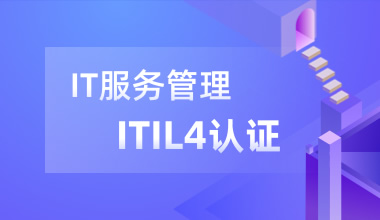Decentralized Architecture and Distributed Management
Subscribe Our Official Account by Click on the Above Words of IT GreenFuture
Hive Mind
If you see antelopes running on the African grassland, it must be lions around; if you see lions escaping, it is likely that a group of elephants are angry; if you see the spectacular scene of hundreds of lions and elepants running away together, why? It is likely that they encounter swarm.
Why does swarm have such a powerful force that lions and elephants are so afraid? If thousands of bees arranging themselves in an array fly to the same direction orderly, everyone will be afraid. At the same time, you also highly praise the good leadership of bees. However, you need to understand that there is not a center in the swarm and queen bee does not play the role of leading and coordinating. There is not any bee leading in front of the team when the bees fly in the air, but the bees still moves forward in the right direction.
Who decides where the swarm should go? If you have read Out of Control written by Kevin Kelly, you will understand that it is a mode of decentralized and distributed management and queen bee is not the real governor.
Kevin Kelly said that it is the essence of democracy and thorough distributed management.
There is not a center in the whole swarm and every bee may have its own idea. The flight direction of the whole swarm is generated by comparison and combination among these ideas. This kind of mechanism allows the whole swarm to know the individual intelligence and find the best choice among a large amount of directions.
In Out of Control, Kevin Kelly said, “The election hall is full of idiots and idiots were selected by other idiots. However, the effect is amazing. This is the real democracy and thorough distributed management. With a thunderous buzzing, the whole swarm moves forward to the direction determined by the public. The queen bee can only follow the swarm. If she can think, may be she can remember that she is only a village girl. Some of her consanguineous sisters chosed her larva, a common larva, when they received an instruction (Who gave the instruction?). After that, she was fed by royal jelly and became a queen bee from a common bee. Why choose that larva as the queen bee? Who choose the selectors?”
In brief, it is a decentralized mode. The result of decentration is distributed management and individual autonomy.
Significances of Center
One of the significances of center is control. In particular, in the industrial era, production and work were gathered together to achieve the goal of complete control. The center can control all of the processes to be completely accurate and errorless.
The Reasons of Decentration
The center plays the role of control in the whole process, which means that all of the resources and data can reach another location only through the center. In the process of Internet construction, the creators of Internet thought about setting up a center to exchange data, but the program was denied soon. Because there was huge data to deal with in the Internet, and there would be many problems if a center was set up, although the purpose of absolute control had been achieved.
If a center is used to deal with the data of the whole network, errors and bugs will be generated very easily in the center. Once there are problems in the center, the whole network will be corrupted. Therefore, the network should be designed as a centerless form to improve the efficiency greatly.
One of the significances of center is control, but if there is an error, it will make the entire network to be paralyzed and chaotic, which means that the center has a bad usability. However, by using the mode of decentration, the entire system seems to be in the state of “out of control” with many small errors, but it will not make the entire network or system generate big problems.
Because of the openness of Internet, small errors are generated continuously in the Internet to avoid big errors, which is the significance of decentration.
Decentration Architecture
There is only a centralized architecture in the traditional bus mode and all of the information relies on the intermediate agent. In the process, if there is a little delay or error in the agent, the entire system will be in the state of huge chaos and danger. However, if we abandon the center, separate all of the individuals and respectively allocate them a simple and continuous task, the processing capacity of the entire system will be improved greatly.
In the process of informatization construction, decentralized architecture systems are completely formed by using the decentralized modes. The architecture systems completely support the capacity of horizontal expansion at all of the levels, rather than having performance problem in certain center. Complete decentralized architectures mean that all of the distributed nodes are not only control nodes but also controlled nodes. Receiveing information as well as sending information in real time, distributed nodes change to be reticular structures from bus architectures, so that information can be transmitted in the entire reticular architectures. As a kind of open and inclusive architectures, decentralized architectures do not have to rely on individuals and allow individual problems, but it shows the self-innovation and evolutionary spirit to the entirety.
In this era, the center-control system is not the best choice. If you want to win, you need to give up the system. With the spirit of openness in Internet, the traditional center is abandoned but the independent individuals are centers. The idea of distribution and decentration makes everything possible, which makes individuals have the rights of autonomy and independent thinking, bringing collective intelligence.
Typical Examples of Decentration
Several the most popular current modes have the characteristic of decentration particularly.
1 Platform Mode
Platform mode refers to a strategy which builds a multi-agent shared business ecosystem and genarate network effect to realize a multi-subject win-win situation. The essence of this mode is connecting the relationship among several parts, removing the centerlization and creating a win-win ecological mechanism among different parts. In brief, this mode refers to “large platform, small front end, rich ecology and co-governance”. Rich ecology refers to the environment created by large platforms. Small front end refers to plenty of subjects. Every small front end has the independent voting right to ultimately determine whether the platform operates or not (More information about platform mode, see the following chapters). As shown below, each service user or service provider is a small front end, relying on the ecological environment provided by the large platform to realize the match between supply and demand as well as self-evolution.
2 Micro-service Mode
Micro-service architecture is a kind of architecture mode. It advocates dividing a single application into a set of small services. These services are coordinated to provide the users with the ultimate value. Each service runs in its own independent process, and the lightweight communication mechanism is used for the communication among services (The mechanism is usually RESTful API based on HTTP).
In micro-service mode, it is stressed that we should try to avoid the unified and centralized service management mechanism. As for a specific service, it should be constructed by selecting the appropriate language and tools according to the business context.
What is the difference between micro-service architectures and bus architectures? We can regard the micro-service as the SOA that removes ESB. ESB is the center of the bus in SOA architecture and the design graphics should be starlike, while micro-service modes are decentralized distributed software architectures.
The purpose of micro-service is to effectively split applications to achieve swift development and deployment and the most important thing is to achieve the autonomy of services. The differences between traditional architectures and micro-services are as follows.
3 The Governance Mode of Distributed Service
Based on the typical distributed service frameworks, we can achieve the direct service call between service providers and consumers without the transmission by EBS as well as reduce the risks of operating centralized architectures. On enterprise architectures, bus-based SOA upgrades to distributed SOA (as shown below). In distributed architecture mode, it is necessary to do the split with obvious benefits. The business is simple; the responsibilities are clear; special persons are responsible for the special works. However, it changes to be a very complex distributed system, which brings a series of problems. How to deal with distributed service management? We need to do distributed service governance (Maybe we should learn from bees on this problem).
In the above distributed service frameworks, dynamically register and find services through the service registration center to make the service location to be transparent; normatively manage services through the service management center to make the usage of services to be regular. In addition, service governance centers themselves are distributed and decentralized.
- 上一篇:浅论ITIL认证的实施计划
- 下一篇:学习黑客攻防技术,保护自身网络安全












